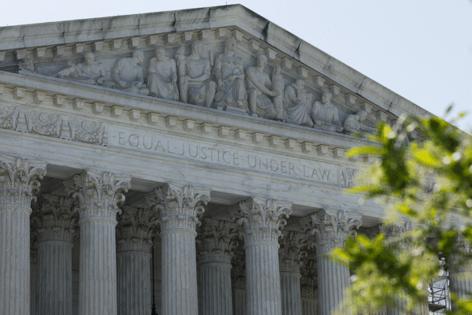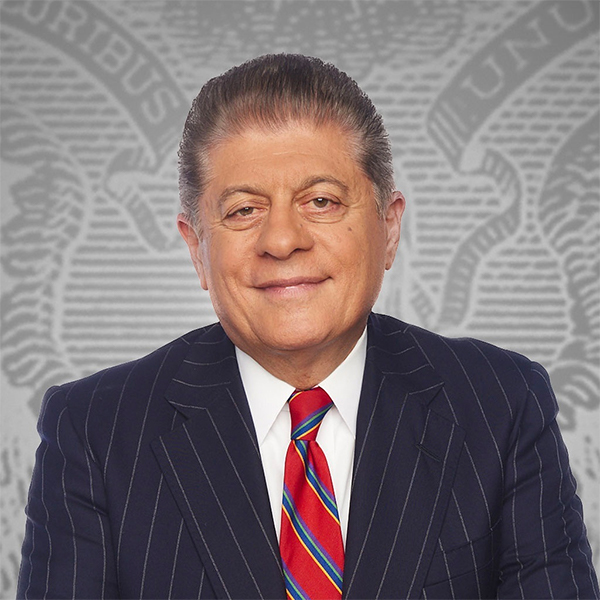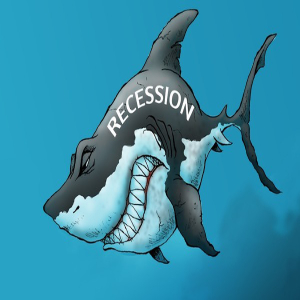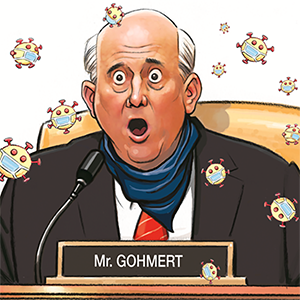Stephen L. Carter: The Supreme Court got the Environmental Policy Act case right
Published in Op Eds
There’s an old Hollywood joke where a screenwriter goes to pitch a romantic comedy, and the producer listens in silence, then exclaims, “Sounds great! Throw in a couple of car chases, and you’ve got a movie!” The joke has endless variants: the screenwriter is pitching a zombie thriller, or a period biopic — whatever the writer pitches, the producer’s punch line remains the same.
That humoresque comes to mind in light of last week's decision by the U.S. Supreme Court in Seven County Infrastructure Coalition v. Eagle County, which is being described, correctly, as sharply circumscribing the ability of litigants to use the National Environmental Policy Act (NEPA) to stack new review requirements on projects already approved by federal agencies.
Because if you ask anybody who’s trying to build, say, new infrastructure to support the power needs of AI — or just the growth of the digital world generally — the worry isn’t having to get agency approval to break ground. It’s all those car chases that the courts might insist they’ve got to add in before they’ve “got a movie.”
That is, all the studies that must be done that have little to do with either their project or its primary goal.
The case before the court was relatively straightforward. The U.S. Surface Transportation Board (yes, I know, nobody who isn’t in railroads has heard of it; suffice to say it inherited some of the authority of the old Interstate Commerce Commission) approved an 88-mile rail line to connect the rich oilfields of Utah’s Uinta Basin with refineries on the Gulf Coast.
As required by federal law, the board completed an environmental impact statement (EIS), which, in Justice Brett Kavanaugh’s words, “clocked in at more than 3,600 pages.” The board approved the project.
The U.S. Court of Appeals for the DC Circuit threw it out. Why? The pertinent reasons are that although the board considered the environmental impact of the railway line itself, it did not adequately take into account other reasonably foreseeable effects — in particular, that the convenience of carrying oil from the Uinta Basin to the Gulf Coast would increase drilling in the first and refining in the second.
Movie, meet car chase.
The Supreme Court was unanimous in its judgment that the DC Circuit erred, though it split on the reasons. Justice Kavanaugh, writing for the majority, noted that NEPA requires agencies to consider the environmental impact but says nothing about how much weight to give it. He scolded the DC Circuit for not showing sufficient deference to the Surface Transportation Board. (Hold on, didn’t the justices say just last year — oh, never mind.)
Then, he got to the heart of the matter. NEPA requires a federal agency only to consider the environmental impact of the particular project it is being asked to approve — not of “separate projects” that it might generate, such as “a housing development that might someday be built near a highway.”
OK, maybe a NIMBY would prefer that the agency take into account that housing development and its attendant needs — or, in this case, the increase in drilling and refining — but the majority’s legal analysis is not only clear but sensible. Deciding whether oil should be drilled or refineries built is the domain of other agencies, and they will produce their own environmental impact studies. The Surface Transportation Board does only railroads.
Perhaps the justices should have said no more. But as Justice Sonia Sotomayor points out in her concurring opinion, joined by two other justices,(1) the majority also opines on the policy implications. Here’s Justice Kavanaugh:
NEPA has transformed from a modest procedural requirement into a blunt and haphazard tool employed by project opponents (who may not always be entirely motivated by concern for the environment) to try to stop or at least slow down new infrastructure and construction projects.
And this:
Fewer projects make it to the finish line. Indeed, fewer projects make it to the starting line. Those that survive often end up costing much more than is anticipated or necessary, both for the agency preparing the EIS and for the builder of the project.
And that in turn means fewer and more expensive railroads, airports, wind turbines, transmission lines, dams, housing developments, highways, bridges, subways, stadiums, arenas, data centers, and the like. And that also means fewer jobs, as new projects become difficult to finance and build in a timely fashion.
All this because, again quoting the majority opinion, “(a) 1970 legislative acorn has grown over the years into a judicial oak that has hindered infrastructure development ‘under the guise’ of just a little more process.”
Nicely put — but on the merits of the case, Justice Sotomayor is, of course, correct. Even if NEPA litigation does make building infrastructure enormously difficult, that fact does not seem a proper tool for interpreting the statute.
Nevertheless, even if the policy analysis does not belong in the opinion, I do think the majority gets the argument right. Take a single example: According to a RAND study released earlier this year, by 2027, the power requirements for AI data centers worldwide will approach the total power capacity of California.
By 2030, the study estimates, a single AI training center could have power requirements “equivalent to eight nuclear reactors.” Now imagine all that generating capacity approved by relevant agencies but turned back by the courts under NEPA because the agencies had not sufficiently considered the indirect effects of unrelated projects outside their jurisdiction.
So, here’s the thing: the majority reached the right legal result but should have stayed away from policy. Still, if we’re going to build the infrastructure we need, we have to stop demanding that they throw in all those car chases.
_____
This column reflects the personal views of the author and does not necessarily reflect the opinion of the editorial board or Bloomberg LP and its owners.
Stephen L. Carter is a Bloomberg Opinion columnist, a professor of law at Yale University and author of “Invisible: The Story of the Black Woman Lawyer Who Took Down America’s Most Powerful Mobster.”
_____
©2025 Bloomberg L.P. Visit bloomberg.com/opinion. Distributed by Tribune Content Agency, LLC.

























































Comments